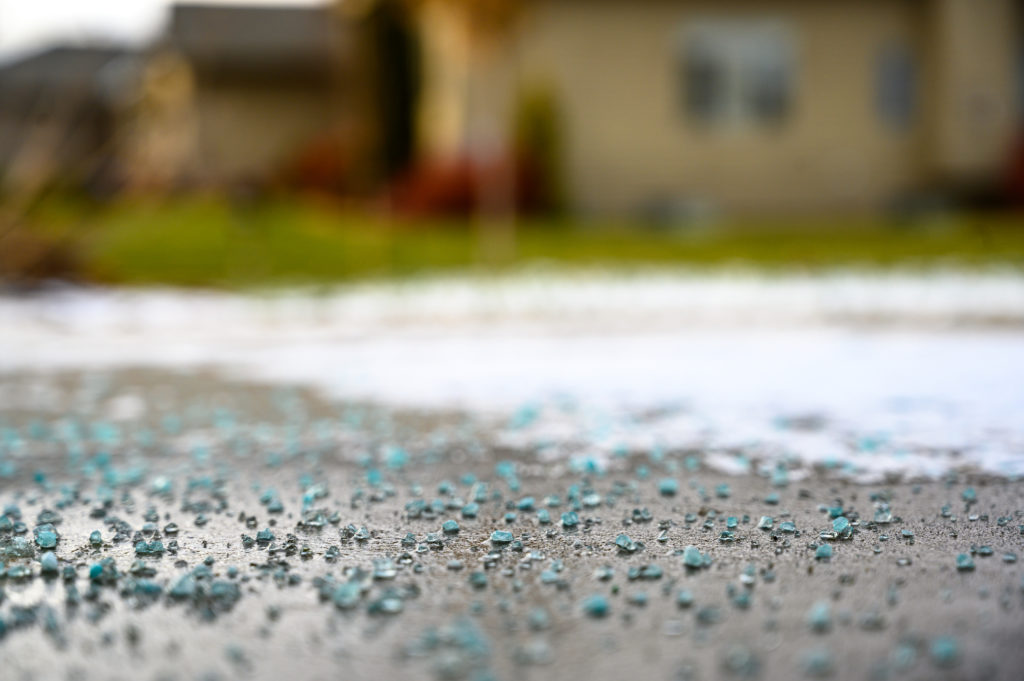
What exactly is rock salt anyway, and how is rock salt different from other “ice melt” products? How do you know which one to purchase? How do you use it properly? Are any products in this category pet-friendly?
Below, we’ve answered these questions and more for you!
What is Rock Salt?
Rock salt, sometimes known as halite, is sodium chloride, the same thing as table salt, but rock salt hasn’t been purified for human consumption, as table salt has; it remains in its natural form with impurities.
How it works: Rock salt works by lowering the freezing point of water, forming a brine solution of salt and water. The solution flows under the ice and breaks the bond between the ice and the surface, such as pavement.
There are other formulations of ice melt, as well, that may be a more environmentally friendly solution. As they dissolve, these latter compounds release less chlorine, causing less damage to surroundings.
This information is from Weaver’s Ace Hardware.
What is Ice Melt?
Ice melt is a blend of sodium chloride as well as magnesium chloride and/or and calcium chloride. Calcium chloride is typically regarded as the best performing ice melt for fast melting and long lasting action. Ice melt is sometimes in the form of flakes. It acts quickly and is often sprayed with a blue color indicator for ease of application.
This information is from Weaver’s Ace Hardware and Angie’s List.
Should I be Using Rock Salt or Ice Melt?
It’s really up to you! Both work well to melt ice and create traction. There are some key differences between the two, however. If any of the categories below are deciding factors for you, then you may have a preference between the two:
- Speed: Rock salt tends to work slightly faster than ice melt at reducing slipperiness by creating traction. On the other hand, since ice melt will work in negative temperatures down to -15°F (and product with calcium chloride will work as low as -25°F), but traditional rock salt only works at 5°F or above. Based on this information, in negative temperatures, ice melt, specifically containing calcium chloride, would be your best bet.
- Cost: In general, rock salt is considerably more cost-effective than ice melt.
- Damage Risk: While rock salt has been known to cause damage over time to asphalt, concrete, and vehicles, ice melt seems to only cause similar issues to concrete, not asphalt, and has more limited effects on vehicles.
- Landscaping Safety: The most common, cheapest forms of rock salt will cause the most extensive damage to your landscaping come spring. The more expensive rock salts are better to use for lawn safety, but may actually be more harmful on your vehicles. If landscaping safety is your primary concern, ice melts using magnesium chloride, although more costly than rock salts, would probably be your best bet.
Based on information from Earth Development Inc. and Consumer Reports.
Is there a “Pet-Friendly” Rock Salt or Ice Melt?
While ice melt may be a necessity, keep in mind that these substances are potentially dangerous to your skin, your yard, and your animals. Some can cause upset stomach when ingested, while others cause irritation to paws, skin, or mucous membranes.
While all products carry some risks to pets, there are some that are “safer” than others. According to PetMD, some of the safest ice melts are the ones with a propylene glycol base, and while generally recognized as relatively pet-safe, it is not as effective as other ice melt options. Pets and other animals should be kept away from such materials as much as possible.
How Do I Use a Rock Salt or Ice Melt?
First, shovel as much snow as possible. Though it may be tempting to skip this step, rock salt works much better when there’s less snow. You use much less rock salt, which is your goal. Note that in high volumes, rock salt can damage concrete, so you want to use as little as possible.
After shoveling, apply the salt to frozen areas with a salt spreader or cup, following manufacturer’s instructions. If using your hands, make sure to wear gloves, as it can irritate bare skin.
The ice will start to melt quickly, but thicker patches may take longer. Let it sit for a while to work. Reapply as needed in problem areas until the spot is safe, and then shovel the piles away. The snow/ice mixtures should be much easier to lift after the salt has been able to work for a while.
What are Some Tips and Warnings?
- Buy in bulk: Salts can be bought early in the winter, or even the summer, as they have a long shelf life, and you prevent running out and possibly getting it at a lower rate. You can also save money by buying your salt in the spring as many stores are trying to get rid of their supply.
- Different types of ice melt such as magnesium chloride only work well when the temperature is above 20 degrees Fahrenheit. If the temperature is lower, other substances such as sand or ash may work better as they provide instant traction, though they won’t melt the ice.
- Calcium chloride comes in rounded white pellets. Handling it with your bare hands can result in skin irritation. Like regular rock salt, calcium chloride run-off can harm concrete and vegetation during the melting season.
- If your community uses salt to coat the roadways, keep a careful eye out on the bottom of your car as it can rust out.
- Keep away from lawns. The chlorine will kill grass and other plants, leaving brown patches when the ice melts.
- Keep away from metals, as it corrodes the material when wet. Again, keep an eye out for the bottom of your car and wheel wells; they can quickly rust out.
*This post was originally published February 12, 2020. It was last updated on November 25, 2024.



